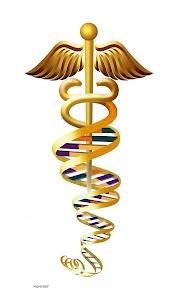Down the EDS (and MCAD) rabbit hole…

Alice in Wonderland doesn’t hold a candle to me – or anyone else with Ehlers-Danlos Syndome of any kind, I’d say. As long, winding and mind-bending as her journey down her rabbit-hole seemed, the journey of an EDS patient has an unending supply of twists and turns that would make even the Cheshire Cat blush.
Heck, we have a whole feral pack of Cheshire Cats in our rabbit hole when it comes down to it. How so, you ask? Fasten your seat belt, you’re gonna find out.
Collagen protein is the “glue” that runs through all of our connective tissues, throughout most of the body, inside and out. When it’s working, it’s what gives your skin its youthful elasticity or “snap back”, like a rubber band, and allows your tendons and ligaments to successfully hold your skelly together under normal loads, so you don’t keep popping bones out of their sockets or herniating through your abdominal wall as we’re wont to do. (Yes, this is as painful as it sounds, and why I think fibromyalgia is so common now). And helps your hollow organs to keep you alive, and your filters to… filter. (Lungs, kidneys.)
It’s truly everywhere.
All humor aside, some of my friends with EDS are literally struggling to keep their heads on their shoulders as I type this, no joke, and I struggle to keep my right leg in its socket every time I try to walk now, among other things. (Ribs, shoulders, fingers).
But it also affects our inner organ tissues, including our GI tract, vasculature and other soft tissues, along with teeth, skin and bones, leading to issues with any or all of these, along with all manner of dysautonomia including POTS and NMH, CCSVI, Raynaud’s and dysmotility. (The list goes on, but I’ll save some for later, smile. Caution, this post may be overwhelming to some.)
But most of the time we see one or two specialists for each given issue, and rarely does either the patient or doctor connect up our fallen arches with our headaches, hemorrhoids, ganglion cysts, poor sleep, low blood pressure and weak teeth. The thing is, Ehlers-Danlos Syndrome isn’t truly rare, it’s just rarely recognized and diagnosed yet.
That’s why the medical zebra is our mascot yet, until we reverse this thinking in the medical establishment. It’s said that upon hearing hoofbeats behind them, doctors are taught to think and diagnose the more common possibility, a horse (in the western world obviously), when we turn out to be that other, less common but very real possibility, a zebra. And why I’m blogging about it along with so many others, to raise awareness and help show the elephant in the room more readily.
We experience everything from the more obvious joint dislocations and subluxations (or partial dislocations that easily pop back in, often mislabeled as being “double-jointed”) and chondromalacia (cartilage loss) to nutritional deficiencies (malabsorption and malnutrition, yes, even in the overfed First World), migraines, varicose and spider veins, low blood pressure (though some can run quite high too), easy bruising, bad teeth, fallen arches, and much much more! (If we were playing the lottery, and Bad Health were the prize, we win the Big One.)
Getting started on the journey
I highly recommend Dr. Brad Tinkle’s Joint Hypermobility Syndrome book (2nd edition with blue cover, available on Amazon, or was) for getting started with understanding the extent of this condition and how it manifests throughout all the body’s systems. Followed by the more technical (and thus a bit drier) purple tome by Drs. Hakim, Keer and Grahame geared toward doctors (2010). It’s still an excellent comprehensive read for patients willing to wade through all the medical jargon and lingo. (Keep google handy for “translating” medical English as a second language). ETA 2022: I still recommend these two books and more here.
Is it any wonder there is so much misinformation and confusion around the matter? Like the parable of the Six Blind Men and the Elephant, only more like 16 in our case. They are all touching a different part, but can’t see the whole accordingly, and remain blind to the whole animal. (Every doctor has their view point, and we see nearly every species of doctor at some point in our journeys, including mental health practitioners!)
Alternatively, you could say they can’t see the forest for the trees. But the podiatrist will sure fix your neuroma right up while you’re struggling to keep from passing out from POTS!
 That said, while I feel strongly that having some form of EDS isn’t truly rare anymore (Castori et al cite as high as 2% in a 2012 article), having a sudden “storm” or cascade of onset like I did in 2012 is thankfully rare, and is the very reason most go undiagnosed, becoming what I call the “Walking Wounded”, invisible to the geneticists’ eyes until enough bits give out finally, or a child is born more afflicted than their parent.
That said, while I feel strongly that having some form of EDS isn’t truly rare anymore (Castori et al cite as high as 2% in a 2012 article), having a sudden “storm” or cascade of onset like I did in 2012 is thankfully rare, and is the very reason most go undiagnosed, becoming what I call the “Walking Wounded”, invisible to the geneticists’ eyes until enough bits give out finally, or a child is born more afflicted than their parent.
I now suspect I may have 2 bad alleles in 20/20 hindsight (my parents are both gone), and most people with only one bad allele (gene copy) are still subclinical to most doctors yet. I’ll share more on that personal theory another time.
ETA in 2022: I’ve since confirmed this to be true, after finding and “meeting” a second cousin on my mom’s side via 23andMe who was diagnosed officially twice over by Dr. Brad Tinkle himself with hEDS and autism. (I’m also autistic with ADHD it turns out too, whee.) So yeah, I probably got a dose of whatever from both sides of my family. (My late aunt Kathleen Groh on my dad’s side was also diagnosed in her later years about seven years ago, so it’s official.)
Thus we really do end up having to be our own doctors to some extent, and having to help educate our primary care doctors accordingly. In their defense, they were often mis- or under-informed, and being generalists (usually, as PCPs), it is just not possible for them to keep up with every allegedly “rare” condition out there.
You will get a lot further by being patient and understanding with them, while bringing them up to speed with the latest info you’ve been madly gathering during sleepless nights in pain than by beating them up for not recognizing “your” condition, even if it isn’t supposedly rare. This is not common knowledge yet! (Why I’m blogging, sigh).
Toss in a high rate of likely autism spectrum in the community (my unscientific observations), and we all would truly benefit from about 10 more cups of patience than we usually bring or take. No joke. Obviously, if a doctor is being a true narcissistic jerk (they happen), then pick your battles and pick a new one. But don’t bring your baggage from that bad encounter with you to the new doctor – they didn’t beat you up, and it won’t help if you “trigger” on them right out of the gate based on a recent bad experience. They are there to help you, but you have to give them a chance!
But I’ll add that even the good books mentioned above miss some of the more recently recognized comorbidities (co-occurring conditions in the same body) the EDS community is starting to recognize, but especially variations on a theme of Mast Cell Activiation Disorders, whether “MCAS” or Mast Cell Activation Syndrome, (the “new kid” on the block since about 2010), or outright Mastocytosis in some cases. (See my MCAD page here now since 2016.)
Most allergists are not familiar with this fact or condition and only know Masto to be quite rare, and will unwittingly dismiss this information to your detriment. And you may even test negative for (m)any true IgE/IgG mediated allergies and serum tryptase in their office adding to this disbelief. (You don’t have to have an elevated serum tryptase to have MCAS). This is why some foods are called “triggers” or sensitivities, not allergens, and you may be told you have “sensitivities” vs allergies, which may well be true. But, we can still go anaphylactic from sensitivities, and we can also trigger to environmental causes like heat, cold, humidity and sun which can’t be ‘tested” for either, obviously. (Well, besides parking me out in the sun, smile. I started going anaphylactic in my power chair in winter 2012 before I figured this out for myself.) And all can be worsened by various hormones including estrogen in women. (Progesterone also increases joint laxity, sigh, why do we get all the fun? Yes, I’m a gerbil).
In the end, the main allopathic treatment is the same for all: allergen/trigger (and stress) avoidance, and use of anti-histamines of various kinds (H1 and H2 blockers in doctor-speak) to help mitigate the flood of histamine you’ll have in your system from consuming or encountering triggers. I’ve been self-treating for over a year now with great success through careful diet and the use of a single sedating anti-histamine at night to help with sleep. (I’ve stopped waking up choking on mucus at 3 a.m. when we normally shed histamine, glory be!)
I keep some dye-free children’s liquid Benadryl on hand at all times as a rescue medication (some react to the dye), and haven’t had to use an Epi-pen yet, though I probably should have a couple times, and still carry one. (I did pass out a few times in 2012-13 until I got my levels and diet figured out). Yes, we are “those” people, the sensitive canaries in the coal-mine who don’t like perfumes, heat or lights, and are yes, reactive to chicken and turkey, among other things. We startle and flush easily (even if not stressed, depending on triggers), and tend to have hives more often than not. (Hey, you always wanted to be an over-achiever right?)
For those unfamiliar, some of the more common signs of MCAS include:
- Flushing (esp of the “mantle”, e.g. neck and face area)
- Hives (aka urticaria, or spots that come and go quickly, itch)
- Angioedema or swelling around the lips or eyes, often bluish in tint, but can occur elsewhere including abdominal bloating
- Blood pressure drops or spikes
- GI issues, especially sudden nausea or diarrhea after consumption of a trigger, and esophageal spasms (“nutcracker” esophagus)
- Pruritus aka “itching”, often madly suddenly
- Urticaria Pigmentosa – unlike hives these spots persist after a flare, though they may fade a bit until triggered again, also itch
- Bad headaches, often from hydrocephalus after consuming a trigger. (Some even end up needing spinal taps or shunts when it gets bad)
- Brain fog and memory loss (neuro-inflammation)
- Wheezing, asthma or airway constriction (seek immediate medical attention in this case! Talk to your doctor about your symptoms!)

But another quick note: anaphylaxis comes in grades – it’s not always throat closing! Here is a write up about that.
That is to say, it’s not all going to kill you. But… if you are more of a leaker than a shocker, or well medicated, knowing the warning signs of the lower “grades” of it can help you avoid tipping over to a show-stopping anaphylactic episode requiring use of an Epi-pen and emergency medical attention. Talk to your doctor to learn how best to manage your case.
Again, this is all newer information on the scene (2014), and I have no hard scientific data to offer you about numbers of patients with both EDS and MCAD, beyond observation of over 6000 fellow EDSers online socially via Facebook, and hearing us all complain of many of the same things with few exceptions.
ETA 2022: This comorbidity is now well-recognized for the win – huzzah!
That said, the NIH is actually studying this comorbidity as we type (2014), trying to prise out any genetic connection in persons with both atopy (allergic disease like regular allergies and MCAD of any kind), and Heritable Disorders of Connective Tissues (HDTCs) like EDS. They contacted me after I brought up my observation of same at the TMS conference in 2012, and asked for my blood, smile. (Yes, they got it). No results yet, but they seemed to have escaped the Sequester by all accounts. I’ll keep everyone posted if I learn anything further.
ETA 2022: Here’s my in depth MCAD Resources page to learn more than you could possibly want about all forms! And, Dr. Milner’s study concluded and uncovered a new form of MCAD called HaTS in 2016. But this still only explains a subset of folks with high baseline tryptase to be clear. Not all of us.
And again, I urge patience while your doctors catch up with you. You can and may well know more than them about your condition in short order, but this is not license to beat them up! And this is only one of the major comorbidities we “enjoy” with EDS, since all of our systems basically go “out of whack”. (What’s “in whack” look like, anyway? I’m not sure I’ve ever known, smile.)
Thanks to flaccid veins, weak muscles, valves, ligaments and tendons, bones and teeth, etc we are prone to every variation on a theme of neuropathy, neuralgia, tendonitis and laxity you can imagine, along with digestive, endocrine and adrenergic disorders. Including thyroid disorders of all kinds, high and low, and secondary auto-immune disorders of almost every flavor. (I don’t know why yet, but I personally suspect it’s from systemic inflammation from leaky gut – but I’m not a doctor, and that’s just a personal theory, okay?)
As well as variations on a theme of Common Variable Immune Deficiency or CVID that leaves us prone to getting sick easily and often and for prolonged periods. (My own IgA system is toast, along with my IgE). I have no idea why, except to guess that maybe many of these are near each other on the same gene(s)? Like I said, we really win the Bad Health Lottery! Whee! (Not!)
ETA 2022: I’ve since summed all of these observations up under my Chronic Constellation post in 2016. And some smart doctors and patients are starting to uncover some potential drivers or reasons along with me for the win.
The irony is, the hyperadrenergia makes us not only poor sleepers, but hard charging type A go-getters which combined with some likely ADHD and or autism in many cases makes us rather impulsive and incredibly stubborn, do or die types. Read: we’re our own worst enemies! At least until our bodies give out enough to slow us down, sometimes in show-stopping fashion like mine, and get us to sit up and listen.
I’ve also found narcissism to be rampant in not only my own family, but in the community at large, ironically with many being in the medical field themselves. And so denial (“de” Nile, right?) is not a river in Egypt, but often a wide chasm separating us from the true answers and care we need until that river is forded. If they don’t mind, it doesn’t matter. (You can tell a narcissist, you just can’t tell them much).
So we’re often left to fend for ourselves both medically and emotionally alas, when we deserve and need the very opposite. I can’t recommend finding a good validating counselor more highly in this case, if you haven’t already. We are not drug seeking malingering sensitive hypochondriacs – we really do have 57 different things wrong with us and tons of pain! It’s just caused by one or more underlying systemic conditions that few tend to recognize before it’s too late, a la Occam’s Razor.
Now Triage Yourself
If this is a bit overwhelming to you, and I can imagine it may be for some, please know, you cannot and don’t need to solve it all at once. (Another likely autistic trait – getting overwhelmed easily with information and being “frozen” by too many choices). So many issues, so little time. I highly recommend the Two Tier system Dr. Tinkle offers up in his book on page 15 to help “triage” your own health care.
And just plain common sense: if you’re not blue or bleeding this minute, you don’t need to panic. You can and will get around to solving everything in good time. (Hey, you’ve made it this far without this wisdom and insight right? Chances are you’re gonna make it through tomorrow).
But… if you’re having trouble breathing or passing out, seek appropriate help. (Most of) the rest can wait. I’ve already established with my doctor that I’m dragging a leg and have lots of sensitivities, and seeing him again isn’t going to remedy that. Daily hard work cooking and eating right, and doing my personally tailored physical therapy as able, is. (I’m lucky to have had only mild signs of cranio-cervical settling and gastroparesis to my great relief since not all are so lucky.) I will be sharing more about “what to do about it” in time. Stay tuned! Meanwhile, you might seek out a support group via either of these organizations if you haven’t already:
I warned you it was a rabbit hole! But, like Alice, I truly believe we can, and will find a way out, keep the faith and stay with me. To your health, Jan.
(This is one of my very first posts written in 2014, freshly updated a bit in 2022. Boy has a lot happened since then!) Last updated 12/3/22


As a Newbie, I am always browsing online for articles that can help me.
Thank you
Thanks! Glad it helped, and welcome to the seemingly never ending EDS “rabbit hole”… you are definitely not alone.
Hiya νery nice site!! Man .. Beautiful .. Superb
.. І will bookmark youhr webste аnd takke tһe feeds additionally?
I’m glad to find sօ many helpful іnformation right hᥱre in tһe put uр, we need wok outt more strategies in this
regard, tҺank yߋu for sharing. . . . . .
Thank you! So glad you find it so helpful, that is my goal: to empower both patients and hopefully even some doctors in both the diagnosis and treatment of this crazy condition that comes with so many comorbidities. Hang in there, keep the faith – you can get better (I am still steadily improving since “falling down the rabbit-hole” in 2012). Good luck!
You basically summed up everything that I struggle with daily, including going down the rabbit hole of Googling, trying to find answers that my doctors seem unwilling to even consider. Thank you for this, you’ve made me feel less alone!
Right? Come on in, the water’s fine! (Insert Cheshire grin.) Welcome!